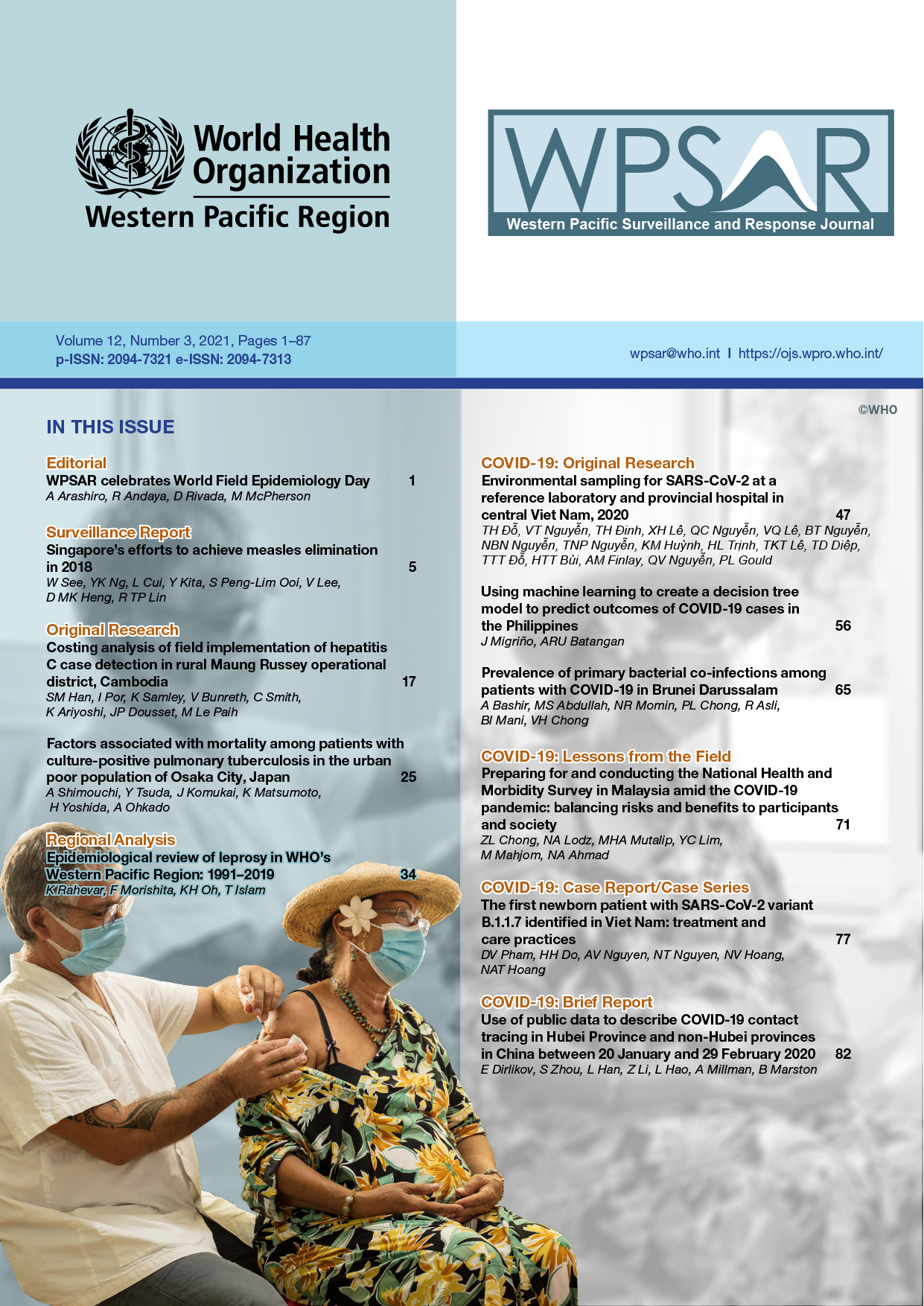Singapore's efforts to achieve measles elimination in 2018
DOI:
https://doi.org/10.5365/wpsar.2019.10.4.002Abstract
The World Health Organization verified that Singapore had eliminated endemic transmission of measles in October 2018. This report summarizes the evidence presented to the Regional Verification Commission for Measles and Rubella Elimination, comprising information about immunization schedules; laboratory testing protocols and the surveillance system; and data on immunization coverage and the epidemiology of cases. Between 2015 and 2017, a total of 246 laboratory confirmed cases of measles were reported. The source or country of infection was unknown for most cases (195; 79.3%). There were 22 clusters, ranging from two to five cases. The most common genotypes detected were D8 and D9. Transmission of B3 was interrupted in 2017, and H1 cases were sporadic and imported. Phylogenetic analyses of the D8 isolates showed the existence of 13 lineages or clusters. Although a few lineages were circulating concurrently, no lineage propagated continuously for a prolonged period, and transmission of each lineage eventually stopped. Although cases and clusters were reported yearly, molecular data showed that none of the lineages resulted in prolonged transmission. There were fewer measles cases in 2017 compared with 2016. The higher number of clusters was likely due to the overall increase in cases because cluster sizes remained small. The occurrence of small clusters is not unexpected since measles is highly infectious. The majority of imported cases did not result in secondary transmission. With the global increase in the number of measles cases, Singapore needs to stay vigilant and continue to promptly test suspected cases; vaccination is the key to preventing infection.

